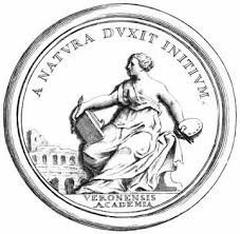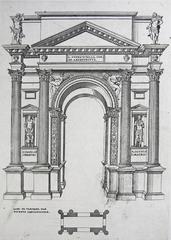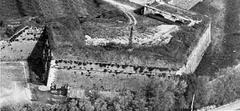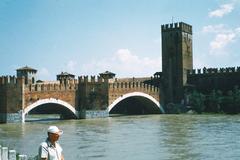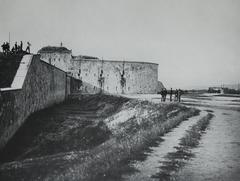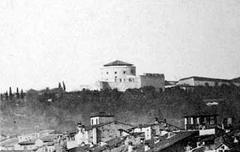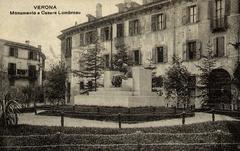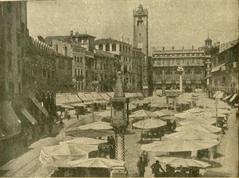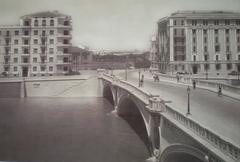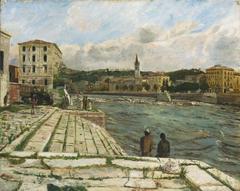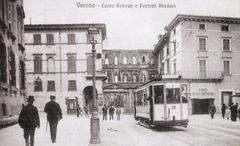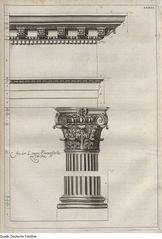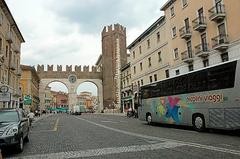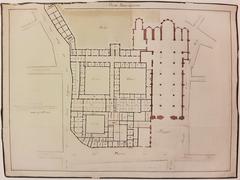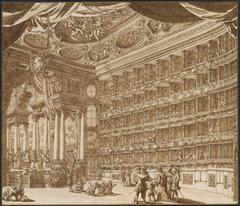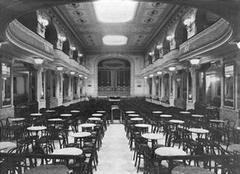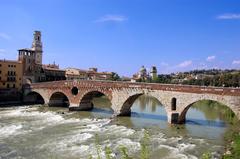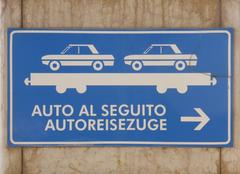
Verona Defensive System: Visiting Hours, Tickets, and Comprehensive Visitor Guide
Date: 04/07/2025
Introduction
Verona, situated at a critical crossroads in northern Italy, boasts a defensive system that chronicles over two thousand years of European military architecture. From Roman times, through the medieval era, Renaissance innovations, and into the Austrian Habsburg period, the city’s fortifications have evolved in response to advances in warfare and shifting political powers. Today, these layered defenses are not just historical relics but integral aspects of Verona’s urban landscape—inviting visitors to explore the city’s fascinating past through its gates, walls, bastions, and forts.
This guide provides an in-depth look at the historical evolution, architectural highlights, practical visiting details—including hours, tickets, accessibility—and travel tips to help you make the most of your visit to the Verona Defensive System.
Contents
- Historical Evolution of the Verona Defensive System
- Roman and Early Medieval Foundations
- Medieval and Renaissance Enhancements
- Habsburg Era and the Quadrilatero System
- Architectural Highlights and Key Sites
- Visiting Information
- Visiting Hours and Tickets
- Accessibility and Guided Tours
- Travel Tips and Nearby Attractions
- Frequently Asked Questions (FAQ)
- Conclusion and Recommendations
- References and Official Links
Historical Evolution of the Verona Defensive System
Roman and Early Medieval Foundations
Verona’s strategic location at the mouth of the Adige Valley made it an essential stronghold for the Romans, who established the city as a municipium in the 1st century BCE. The earliest defensive structures included thick stone walls, defensive towers, and monumental gates such as Porta Borsari and Porta Leoni. These gates, still visible today, exemplify Roman military engineering and urban planning (Wikipedia: Roman walls of Verona).
The city’s defenses were repeatedly expanded through the centuries. Under Theodoric the Great in the 6th century, Verona received a second circuit of walls, reinforcing its prominence as a military and administrative hub.
Medieval and Renaissance Enhancements
During the Middle Ages, the Scaligeri (della Scala) family transformed Verona into a fortified stronghold. Their most iconic contribution is Castelvecchio, a riverfront fortress with the fortified Ponte Scaligero bridge, designed for both defense and control of the Adige (Visit Verona: Bastione delle Maddalene). The city walls were extended, and defensive towers were constructed along the Torricelle hills, creating a multi-layered urban defense.
With Verona’s absorption into the Republic of Venice in 1405, military architecture advanced further. The introduction of gunpowder and artillery led to the construction of innovative bastioned ramparts. Renowned architect Michele Sanmicheli redesigned city gates and bastions, blending Renaissance aesthetics with cutting-edge defense (Wikipedia: Verona Defensive System). Gates like Porta Nuova and Porta Palio remain testaments to this harmonious blend of form and function.
Habsburg Era and the Quadrilatero System
Following the Congress of Vienna in 1815, the Austrian Habsburgs made Verona the linchpin of the Quadrilatero, a network of fortresses critical to the defense of northern Italy (Everything Explained: Verona Defensive System). Austrian engineers respected earlier fortifications, integrating Roman, Scaliger, and Venetian works with new forts, entrenched camps, and logistical infrastructure. Detached forts such as Forte Sofia and Forte San Leonardo provided additional layers of defense and panoramic views of the city (Visit Verona: The Veneto Fortresses).
Architectural Highlights and Key Verona Historical Sites
Roman Walls and Gates
- Porta Borsari: Main entrance to Roman Verona, dating to the 1st century AD. Features double arches and Latin inscriptions (Wikipedia: Roman walls of Verona).
- Porta Leoni: Partially excavated Roman gate, illustrating the city’s layered history.
Medieval and Renaissance Fortifications
- Castelvecchio & Ponte Scaligero: 14th-century fortress and bridge; now houses the Castelvecchio Museum (Castelvecchio Official Site).
- City Walls and Towers: Medieval walls encircle Verona’s historic center, punctuated by towers such as Torre dei Lamberti.
- Venetian Gates: Porta Nuova, Porta Palio, and Porta San Zeno showcase Renaissance military architecture (Visit Verona: Bastione delle Maddalene).
Habsburg and Austrian Forts
- Bastions and Ramparts: Star-shaped bastions and robust ramparts, like Bastione delle Maddalene and Bastione San Zeno, reflect adaptations to artillery warfare.
- Forte Sofia: Hilltop fort with panoramic views, accessible by hiking trails (Forte Sofia visitor info).
Visiting Information
Visiting Hours and Ticket Information
- Castelvecchio Museum: Open Tuesday–Sunday, 8:30 AM–7:30 PM; closed Mondays. Last admission at 6:30 PM. Entry ~€10, with discounts for children and EU citizens under 26 (Castelvecchio Official Site).
- Roman Gates & City Walls: Accessible at all times as part of public streets and parks.
- Venetian and Austrian Bastions: Vary by location; many outdoor areas are free and open year-round. Some forts (e.g., Forte Sofia) have variable hours—check the latest on official websites (Forte Sofia hours).
- Verona Card: 24/48-hour pass offering access to major sites and public transport. €20 (24h), €25 (48h), available at tourist offices and online (Verona Card details).
- Guided Tours: Prices and schedules vary; book in advance, especially for underground or restricted-access areas (Verona Guided Tours).
Accessibility and Guided Tours
- Mobility: Most city center sites are accessible, but some towers, ramparts, and outlying forts have stairs or uneven terrain. Castelvecchio Museum offers accessible routes; contact sites in advance if needed (Rome and Italy Accessible Tours).
- Guided Tours: Available through local operators and the tourist office; tours may include exclusive access and in-depth historical context (Verona Guided Tours).
- Family-Friendly: Most sites are suitable for families; Castelvecchio Museum offers interactive exhibits.
Travel Tips and Nearby Attractions
- Getting Around: Verona’s historic center is best explored on foot. Use local buses for longer distances (Verona in Tour).
- Best Time to Visit: Spring and autumn offer mild weather and fewer crowds. Arrive early in summer for comfort and photos.
- Nearby Attractions: Pair your visit with the Arena di Verona, Juliet’s House, and Piazza delle Erbe.
Frequently Asked Questions (FAQ)
Q: What are the visiting hours for Castelvecchio Museum?
A: Tuesday–Sunday, 8:30 AM–7:30 PM; closed Mondays.
Q: Are tickets required for the Roman gates or city walls?
A: No, these are accessible from public streets without tickets.
Q: Are guided tours available for Verona’s fortifications?
A: Yes, a variety of guided tours are offered, often including Castelvecchio and the city walls (Verona Guided Tours).
Q: Is the defensive system accessible to visitors with mobility issues?
A: Some sites are accessible, but many have stairs or uneven terrain. Check accessibility in advance.
Q: Are there combined tickets for multiple defensive sites?
A: The Verona Card offers access to several sites and is recommended for multiple visits (Verona Card details).
Conclusion and Recommendations
The Verona Defensive System stands as a vivid record of the city’s resilience and strategic significance across the centuries. Its Roman gates, medieval walls, Renaissance bastions, and Austrian forts collectively narrate Verona’s evolving military and urban identity. Visitors can experience this living history firsthand by exploring accessible sites, joining guided tours, and attending cultural events set within these historic defenses.
To enhance your visit:
- Download the Audiala app for interactive maps, audio guides, and real-time updates (Audiala app).
- Purchase the Verona Card for value and convenience.
- Wear comfortable shoes and plan for some walking and stairs.
- Check official websites for the latest opening hours and ticketing information.
For more in-depth exploration, consult official resources such as Visit Verona and the Castelvecchio Museum.
Immerse yourself in Verona’s fortified heritage and discover how its walls, bastions, and gates have shaped the city—and continue to captivate travelers from around the world.
References and Official Links
- Roman walls of Verona, 2024, Wikipedia
- Bastione delle Maddalene, 2024, Visit Verona
- Verona Defensive System, 2024, Everything Explained
- Verona Defensive System, 2025, Wikipedia
- Castelvecchio Museum, 2025, Official Site
- Verona Tourism, 2025, Visit Verona
- Forte Sofia Visitor Info, 2025, Audiala
- Verona Card Details, 2025, Along Dusty Roads
- Verona Guided Tours, 2025, Veronika’s Adventure
- Verona Travel Guide, 2025, Not About The Miles























